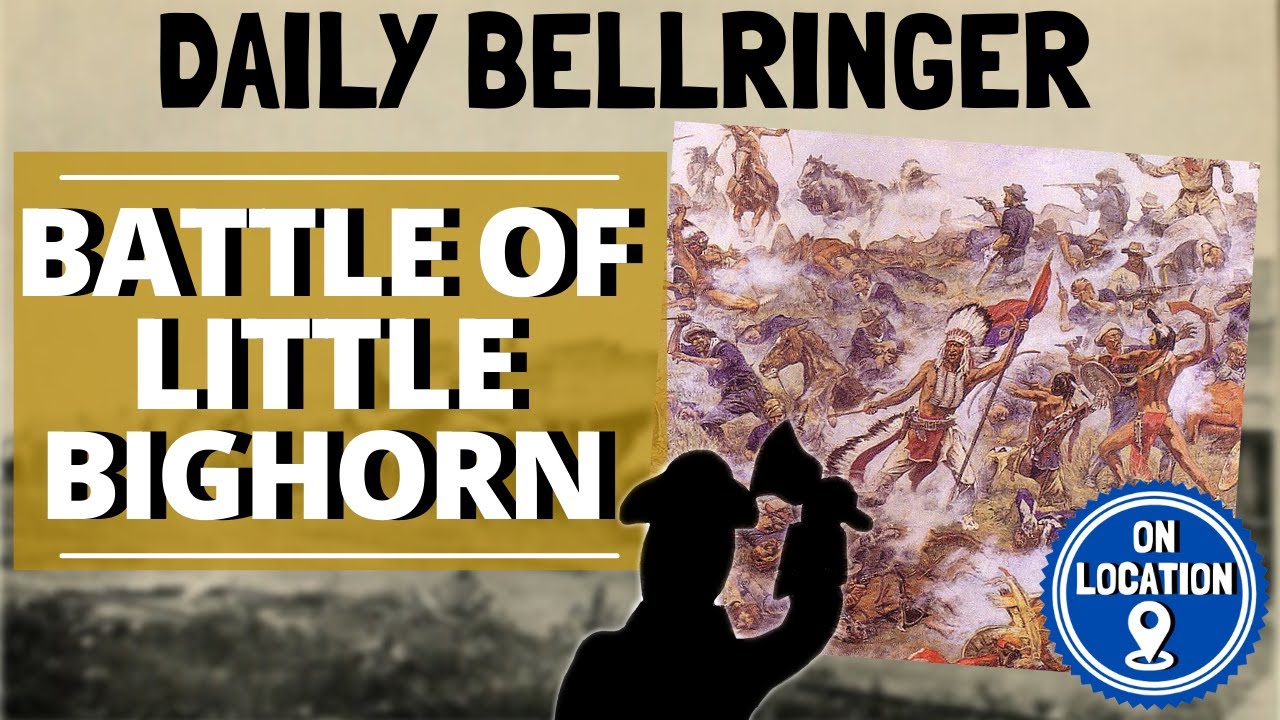The Battle at Little Bighorn | History
Summary
TLDRThe script recounts the tragic Battle of the Little Bighorn, also known as Custer's Last Stand, which took place on June 25, 1876. Lieutenant Colonel George Armstrong Custer and his 7th Cavalry were sent to subdue a large village of Sioux and Cheyenne tribes led by Sitting Bull. Despite being vastly outnumbered and surrounded, Custer’s troops were divided, leading to their complete defeat. The battle marked the Plains Indians’ greatest victory, with Custer and over 200 soldiers killed. The event led to increased military action against the tribes, and Sitting Bull eventually fled to Canada.
Takeaways
- 😀 The Battle of the Little Bighorn, also known as Custer's Last Stand, took place on June 25, 1876, and is one of the most significant defeats in American military history.
- 😀 Lieutenant Colonel George Armstrong Custer and over 600 soldiers of the 7th Cavalry were sent to subdue a large village of Sioux and Cheyenne Native Americans.
- 😀 The Sioux and Cheyenne, led by Sitting Bull, resisted being forced onto reservations, leading them to form a massive, mobile village in the spring of 1876.
- 😀 Custer and his troops were unaware of the full size of the Native American village they were confronting, which ultimately contributed to their downfall.
- 😀 Custer divided his forces into three columns during the battle, a decision that many consider to be a fatal mistake.
- 😀 Custer underestimated the strength of the Native American forces, leading to his realization that he lacked the manpower to win the battle.
- 😀 Custer sent a rider for reinforcements, but by then, the battle was already lost, and his forces were surrounded.
- 😀 Custer and over 200 of his men were killed during the battle, with the Native American forces overwhelming them on Last Stand Hill.
- 😀 The victory at the Battle of the Little Bighorn marked the greatest success for the Plains Indians against the US Army.
- 😀 In response to the defeat, the US government sent additional military forces to suppress the Native American resistance, leading to Sitting Bull's eventual flight to Canada and Crazy Horse's surrender in Nebraska.
- 😀 The battlefield remains an important historical site, with the Battle of the Little Bighorn studied extensively as one of the most decisive military engagements in American history.
Q & A
What was the main objective of Lieutenant Colonel George Armstrong Custer's mission at the Little Bighorn?
-Custer's mission was to subdue a village of defiant Native Americans, specifically Sioux and Cheyenne tribes, who were led by Sitting Bull.
Why were the Sioux and Cheyenne tribes resisting the United States Army?
-The Sioux and Cheyenne tribes resisted because they did not want to give up their land on the northern plains and were opposed to being moved onto reservations.
How did the village of Native Americans react to the approaching U.S. Army?
-The Native American village was always on the move to avoid capture, as they knew the U.S. Army was after them. They managed to stay elusive by moving across the plains of Montana.
What mistake did Custer make during the battle at Little Bighorn?
-Custer made the fatal mistake of dividing his forces into three separate columns, which weakened his ability to engage the Native American forces effectively.
What did Custer realize after seeing the size of the Native American village?
-Custer realized that his forces were outnumbered and that he did not have enough troops to confront the large village, prompting him to send a rider for reinforcements.
What role did the landscape play in the battle of Little Bighorn?
-The landscape played a critical role as it was treacherous, with hidden channels and ravines, providing perfect cover for the Native American fighters, but making it difficult for Custer’s troops to maneuver.
How did the Native Americans react to the U.S. Army's attack?
-The Native Americans surrounded Custer's battalion, forcing them to retreat to high ground. The Native forces launched a counterattack, eventually overwhelming Custer's men.
What is the significance of Last Stand Hill?
-Last Stand Hill is where Custer and his remaining soldiers made their final stand during the battle, but they were ultimately killed by the Native American forces.
What were the consequences of Custer's defeat at Little Bighorn?
-The defeat at Little Bighorn led the U.S. government to send more military forces to the region, eventually resulting in the flight of Sitting Bull to Canada and Crazy Horse's surrender.
What lasting impact did the Battle of Little Bighorn have on U.S. history?
-The Battle of Little Bighorn became a symbol of Native American resistance and was one of the most studied and analyzed military engagements in U.S. history, marking a significant defeat for the U.S. Army.
Outlines

このセクションは有料ユーザー限定です。 アクセスするには、アップグレードをお願いします。
今すぐアップグレードMindmap

このセクションは有料ユーザー限定です。 アクセスするには、アップグレードをお願いします。
今すぐアップグレードKeywords

このセクションは有料ユーザー限定です。 アクセスするには、アップグレードをお願いします。
今すぐアップグレードHighlights

このセクションは有料ユーザー限定です。 アクセスするには、アップグレードをお願いします。
今すぐアップグレードTranscripts

このセクションは有料ユーザー限定です。 アクセスするには、アップグレードをお願いします。
今すぐアップグレード関連動画をさらに表示

Battle of Little Bighorn | Daily Bellringer

Reliving Custer's Last Stand at the Little Bighorn

Where Sitting Bull and Crazy Horse Defeated Colonel Custer

Famous Battles of Ancient Greece Full Cinematic Documentary

The Creepy Artist the Internet Loves

Ali bin Abi Thalib Mengalahkan Amr bin Abdi Wudd dalam Pertempuran EPIC Khandaq ( Kisah Islami )
5.0 / 5 (0 votes)
